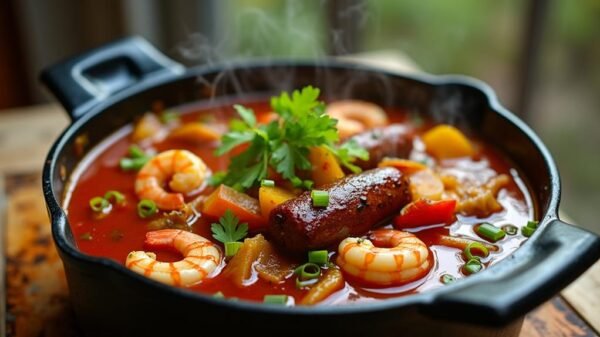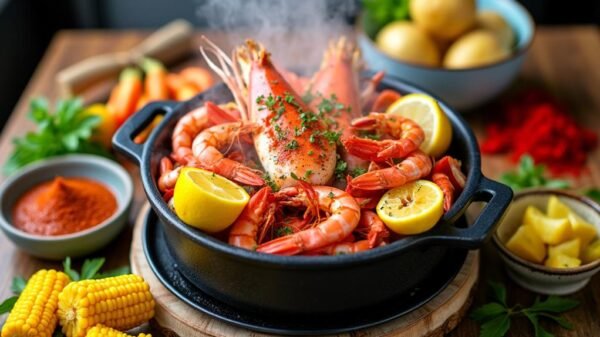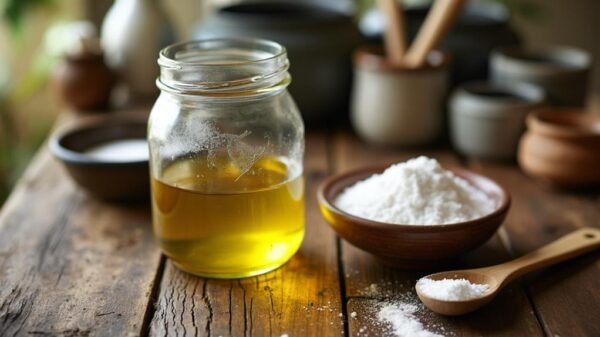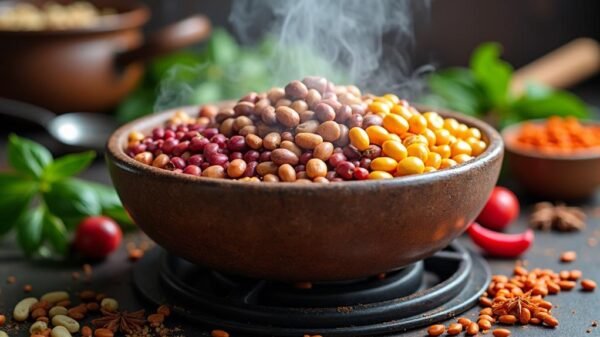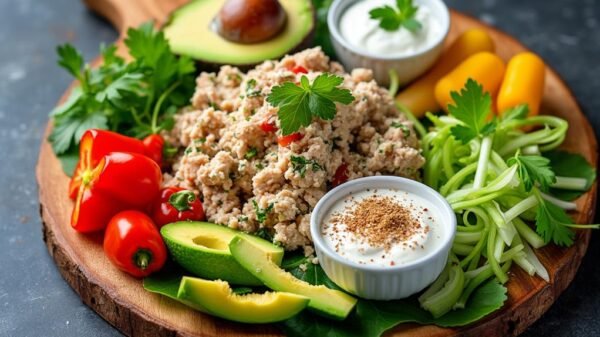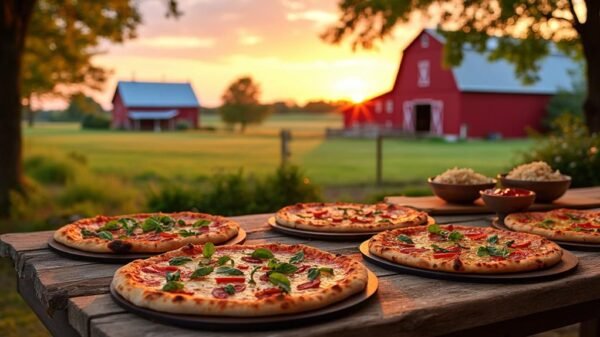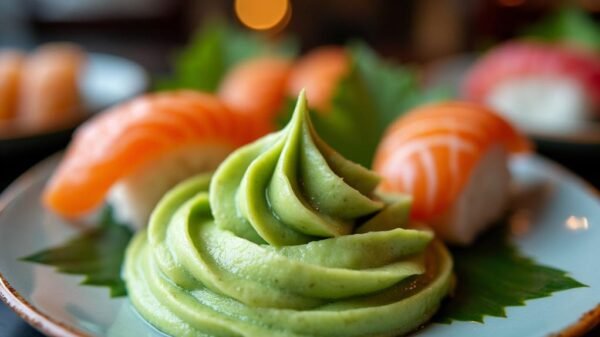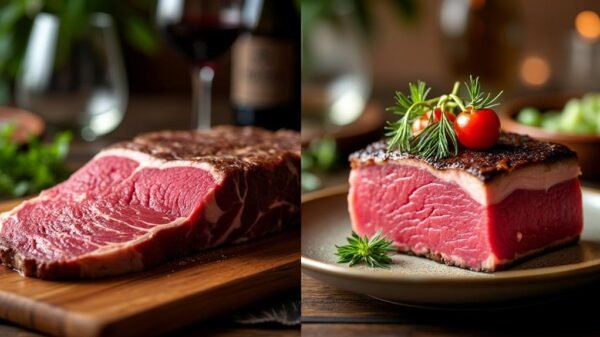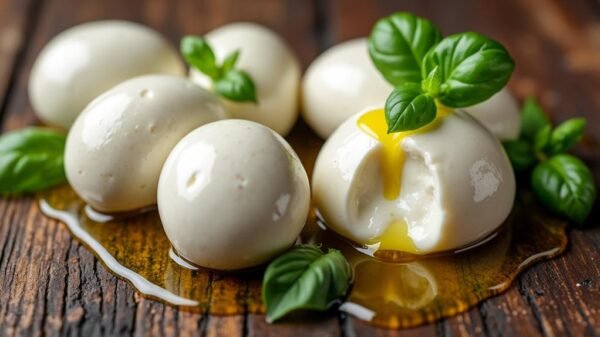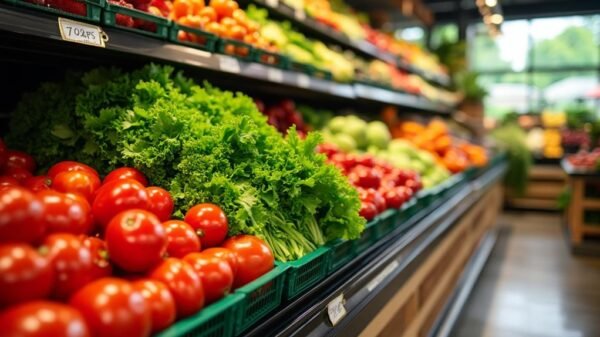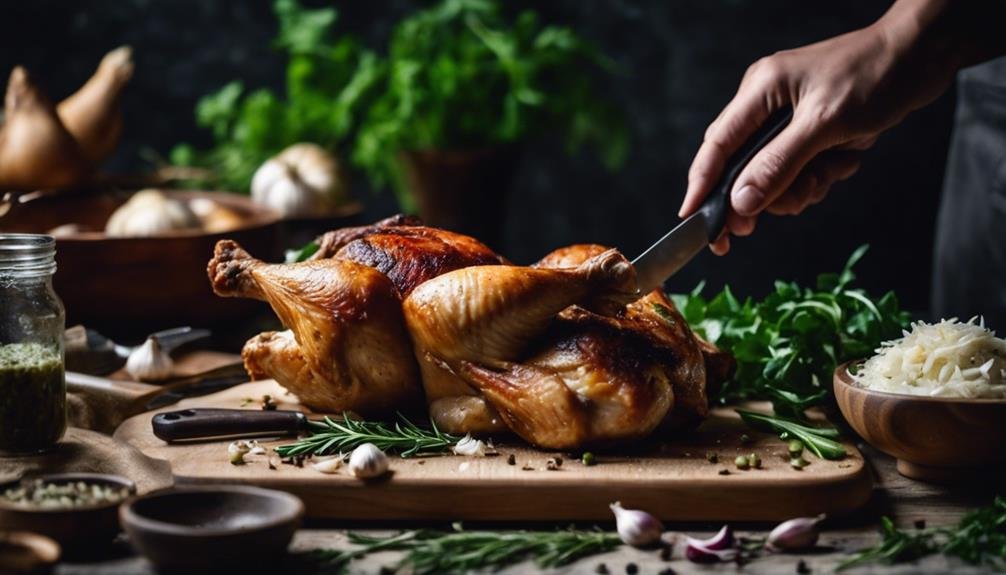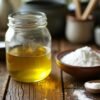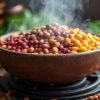In a world where the term ‘fresh herbs‘ might be mistaken for the latest indie band, you’re about to embark on a culinary adventure that will elevate your cooking from mediocre to mesmerizing.
Let’s face it: anyone can sprinkle dried oregano on a pizza, but it takes a special kind of culinary bravery to harness the vibrant flavors of fresh basil, cilantro, or dill. You’ll learn to select and prepare these green wonders and store them in ways that would make your refrigerator proud.
Stick around to uncover the secrets of transforming your dishes with the magic of fresh herbs and why understanding herb pairings could be the missing ingredient in your kitchen repertoire.
Cooking With Fresh Herbs Key Takeaways
- Select fresh herbs with vibrant colors and unblemished leaves to ensure maximum flavor.
- Store herbs properly in the fridge with damp paper towels or in a jar of water to extend their freshness.
- Add fresh herbs towards the end of cooking to preserve their delicate flavors and aromas.
- Use a 3:1 ratio of fresh to dried herbs when substituting in recipes for enhanced taste.
Selecting Quality Herbs
When scouting for fresh herbs, always aim for those bursting with vibrant colors and robust aromas to guarantee high quality and freshness. Selecting quality herbs isn’t just about adding flavor to your dishes; it’s about transforming them into something extraordinary. Look for herbs with firm stems and lively, unblemished leaves. This isn’t just a sign of freshness; it’s a promise of the potent flavors and fragrances that await.
Now, let’s talk aromas. Gently rub a leaf between your fingers. You’ve hit the jackpot if the fragrance envelops you with its intensity. That’s your herb shouting, ‘I’m packed with flavor!’ And while you’re at it, steer clear of any herbs with yellowing or brown spots. They’re the tell-tale signs of age or neglect, neither of which will do your culinary creations any favors.
If you’ve got the option, go organic. Not only are you sidestepping a whole host of pesticides and chemicals, but you’re also getting herbs at their natural best. Their potency and flavor are untouched, ready to elevate your dishes from good to unforgettable. Remember, freshness and quality aren’t just details—they’re essentials in the world of herbs.
Preparing Your Herbs
After selecting your quality herbs, it’s time to prepare them properly to release their full flavor and aroma into your dishes. Cooking with fresh herbs doesn’t have to be intimidating. You can elevate your meals from good to gourmet with a few simple steps. Remember, the key to maximizing their vibrant flavors and aromas lies in how you handle them from the moment they enter your kitchen.
- Avoid washing until ready to use: Don’t rinse your herbs until it’s time to cook to maintain their shelf life and prevent premature wilting. Moisture is the enemy of freshness, so keep them dry to ensure they’re in peak condition when needed.
- Tear or chop leaves; use delicate stems: Those delicate stems add a subtle depth of flavor to soups and stews. When it comes to the leaves, a gentle tear or a quick chop right before adding them to your dish can unleash their full potential.
- Add at the end of cooking: To preserve the integrity of your prepared herbs’ flavor and aroma, sprinkle them into the dish towards the end. This little trick guarantees they remain bright and impactful, giving your meals that final touch of culinary magic.
Storage Tips and Tricks
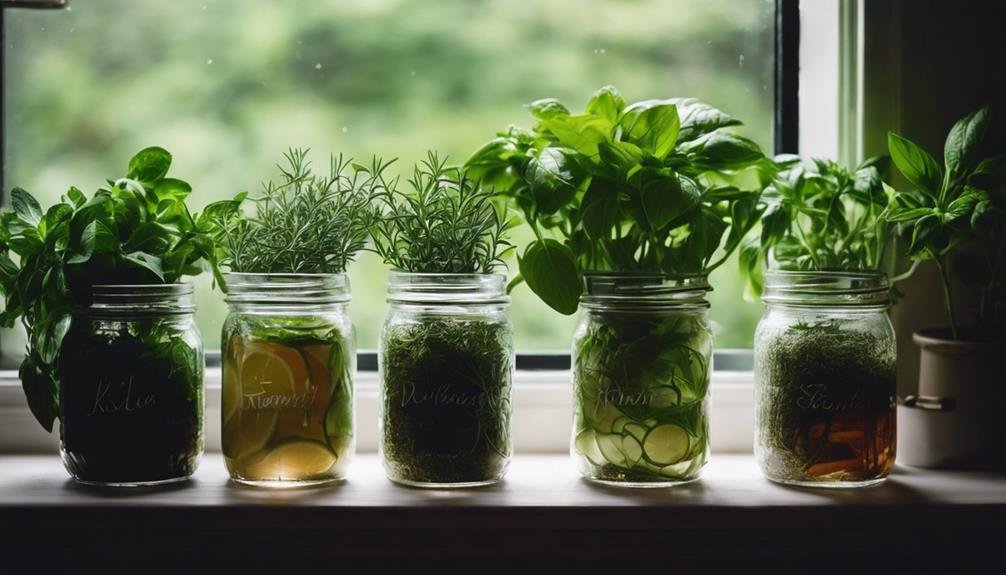
Properly storing your fresh herbs can be the game-changer you need to keep them vibrant and flavorful for longer. When you’ve picked herbs with vibrant colors and strong aromas, ensuring their quality and flavor shine through in your dishes starts with how you store them. Using fresh herbs offers a world of taste differences, but their limited shelf life can be challenging. Here’s how you can extend their freshness with a few simple tricks.
| Method | Description |
|---|---|
| Jar with water-covered stems | Store in the fridge to maintain freshness. |
| Wrap in a damp paper towel. | Then, place in the warmest part of the fridge. Ideal for parsley and cilantro. |
| Use promptly | Fresh herbs have a limited shelf life. |
| Pretreatment | Wrapping in a damp paper towel can extend freshness. |
Incorporating Herbs Into Recipes
Now that you’ve mastered storing your fresh herbs let’s explore how to weave their vibrant flavors into your recipes. Cooking with fresh herbs like rosemary enhances the flavor of your dishes and adds a personal touch that can’t be replicated using dried substitutes.
To maximize the flavor of your herbs, remember these key tips:
- Always add fresh herbs towards the end of cooking. This preserves their delicate flavors and aromas, ensuring they don’t become dull or overly bitter.
- Chop your herbs with a sharp knife or use scissors for uniform chopping. This technique prevents bruising and keeps the herbs looking bright and fresh in your dishes.
- Remember, the ratio when substituting fresh for dried herbs is roughly 3:1. This means you’ll use three times the amount of fresh herbs to achieve the same intensity of flavor as using dried.
Understanding Herb Pairings
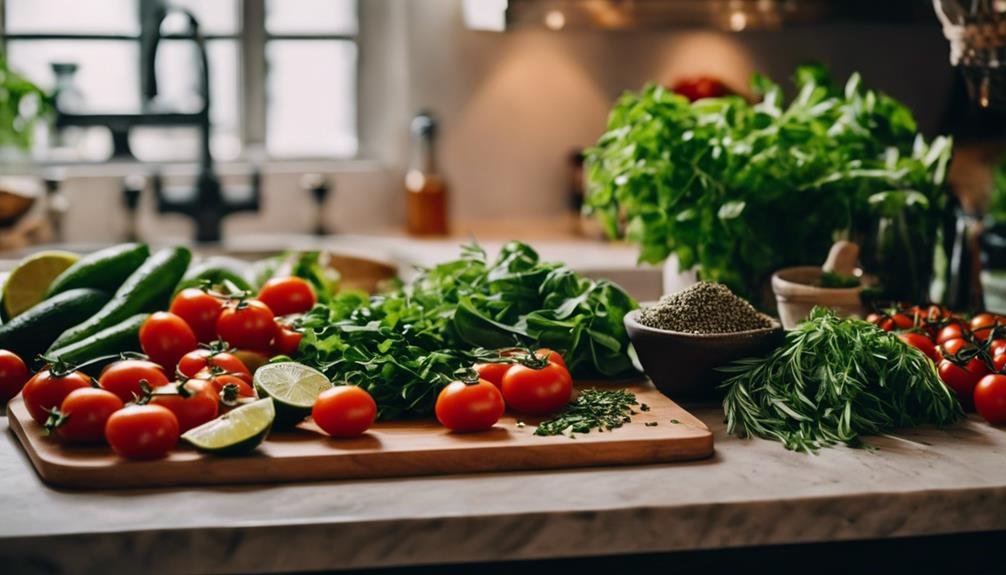
Exploring the art of herb pairings can enhance your meals from good to gourmet, revealing a world of flavor profiles that perfectly complement your favorite dishes. Imagine the magic of basil mingling with tomatoes, transforming a simple pasta into a masterpiece, or cilantro and lime bringing a zesty zing to your Mexican feast. These aren’t just happy accidents; they’re the result of understanding how different herbs can elevate the taste and aroma of your cooking.
Combining rosemary and thyme can add a sophisticated touch to roasted meats, creating a melody of flavors that dance on your palate. Meanwhile, dill and parsley might be the secret to the seafood dish you’ve been dreaming of, offering a fresh, herbaceous note that complements the ocean’s bounty.
But don’t stop there. Experimenting with herb pairings invites creativity in cooking, allowing you to mix and match dried herbs and fresh herbs combinations to discover new taste sensations. It’s not just about adding depth to dishes; it’s about balancing flavors to make your meals sing. So play with your food, and let herb pairings guide you to culinary delights you’ll be proud to share.
Frequently Asked Questions
How Do I Use Fresh Herbs in Cooking?
Incorporating fresh herbs into your cooking can significantly enhance the flavor of your dishes. To do this, it’s best to add the herbs towards the end of the cooking process to preserve their vibrant flavors. When preparing the herbs, snip the leaves off and avoid washing them unless necessary, as water can dilute their essential oils and aromas. Generally, when substituting fresh herbs for dried ones in a recipe, use three times the amount specified for the dried herbs to achieve the best taste.
What Are Some Tips for Cooking With Herbs?
To cook effectively with herbs, adhering to certain guidelines is essential. Firstly, when substituting, use the 3:1 fresh-to-dried herb ratio. To preserve their flavor, incorporate fresh herbs towards the end of the cooking process. Minimize washing to prevent loss of flavor and essential oils. Utilize herb scissors for more efficient chopping, and don’t hesitate to blend various herbs to elevate the dish’s taste.
How Do You Get the Most Flavor Out of Fresh Herbs?
To get the most flavor out of fresh herbs, you should harvest them just before use, choose vibrant and aromatic ones, store them wrapped in damp towels, use three times the amount you would of dried herbs, and add them towards the end of cooking. This approach will ensure a maximum burst of flavor, impressing your guests.
What Is the General Rule for Using Herbs and Spices?
The general rule for using herbs and spices is to begin with a small amount and adjust according to taste, as each herb and spice has unique flavor strength. Experimenting and understanding their flavors is crucial to achieving the perfect balance in your dishes.
Conclusion
Now you’re armed with the herb essentials! Selecting, prepping, and storing your fresh herbs doesn’t have to be intimidating.
Delve into your culinary adventures, adding that zesty twist to your dishes. Remember, it’s all about enhancing flavors while keeping them healthy. Experiment with herb pairings and see your meals transform.
So, sprinkle, chop, and blend your way to deliciousness. Cooking with herbs isn’t just a skill; it’s your ticket to elevating everyday meals into gourmet experiences.
Happy cooking!



